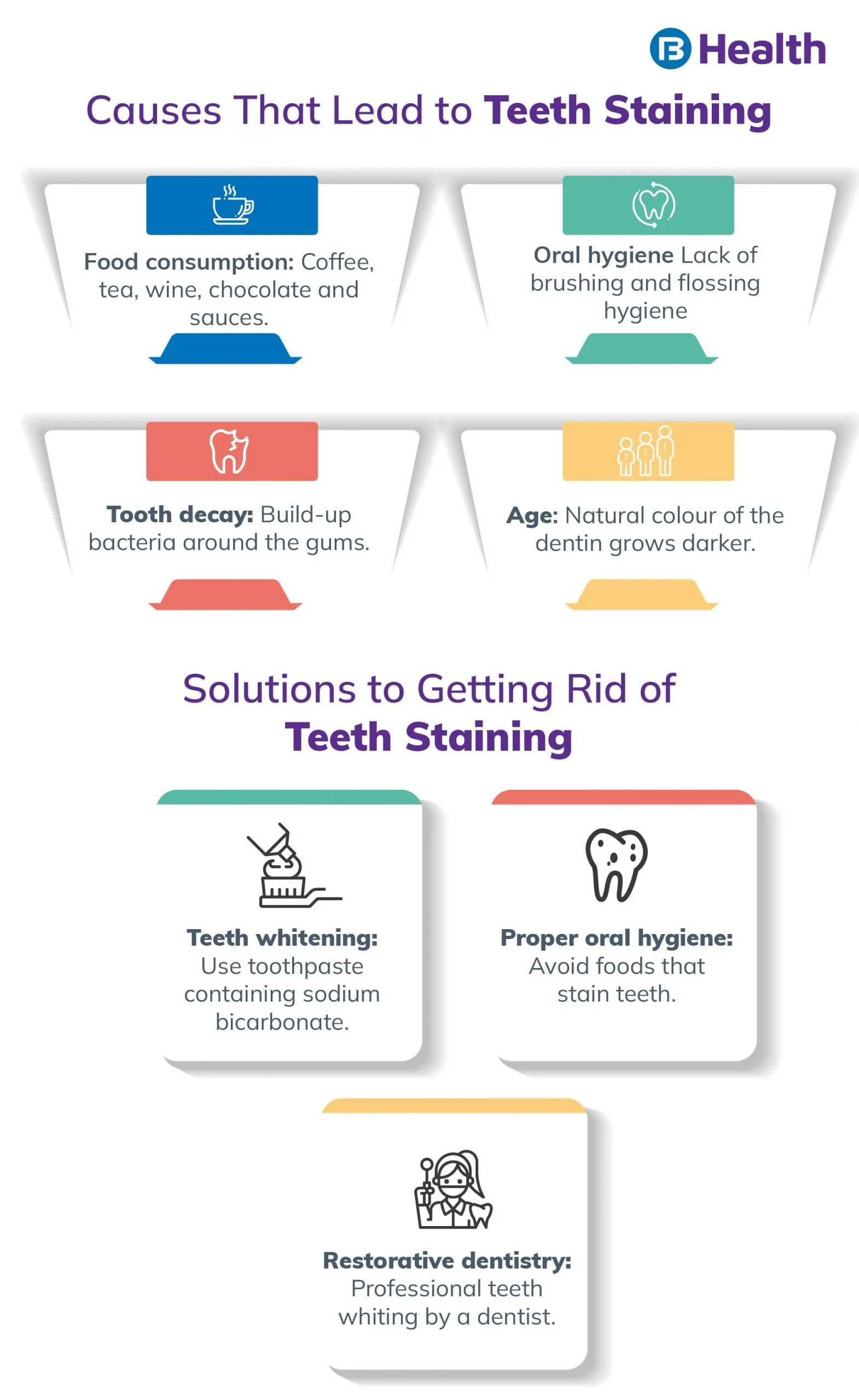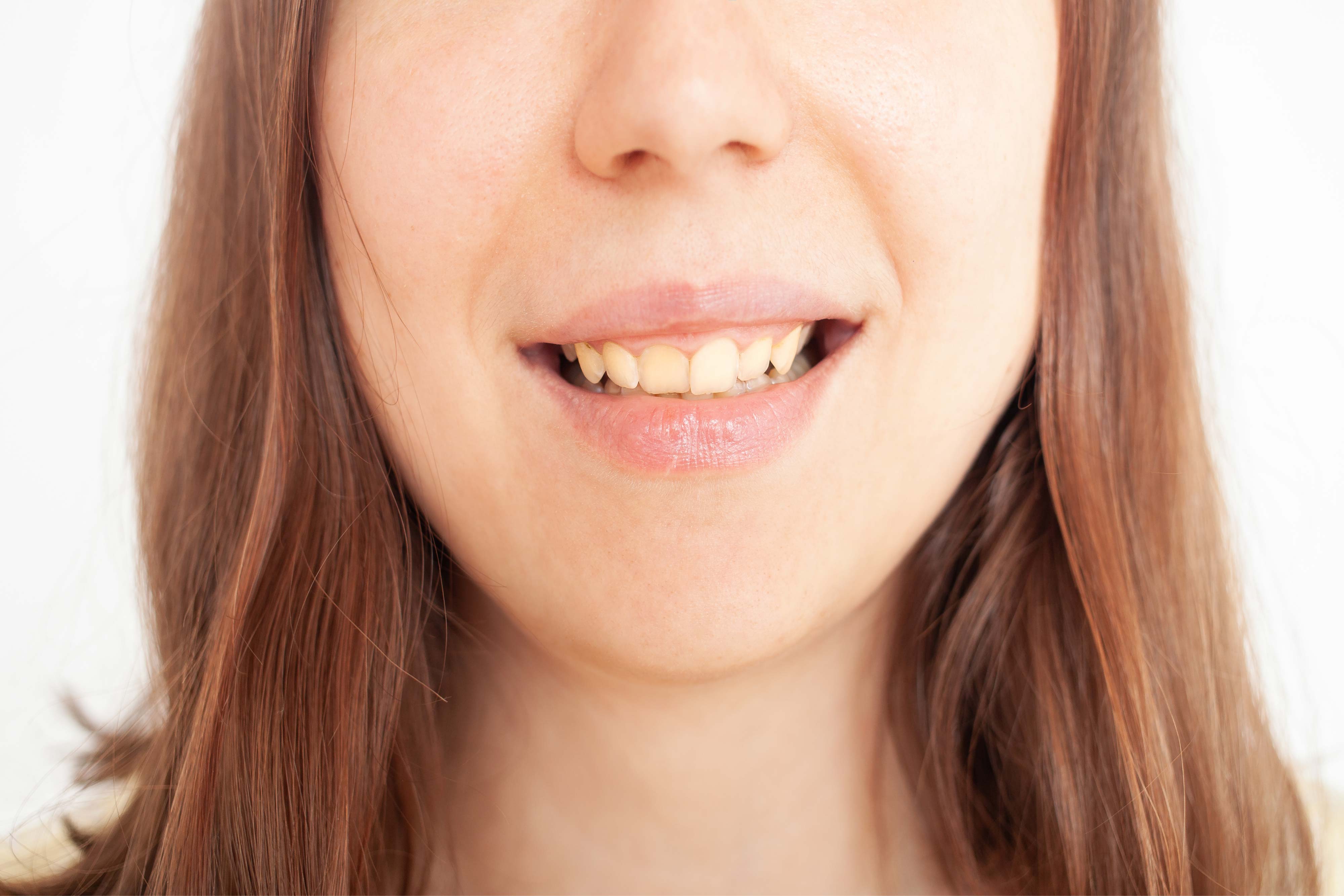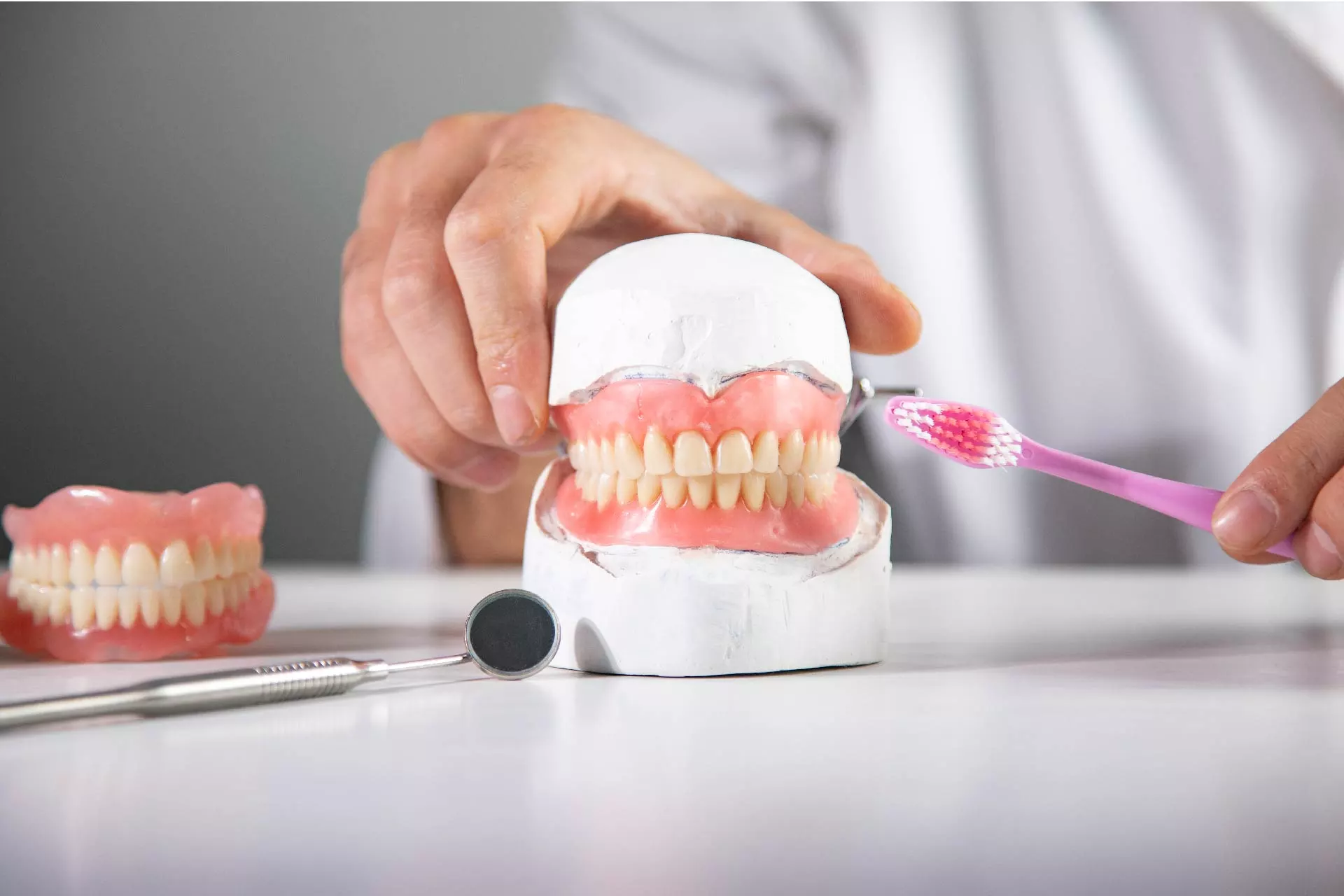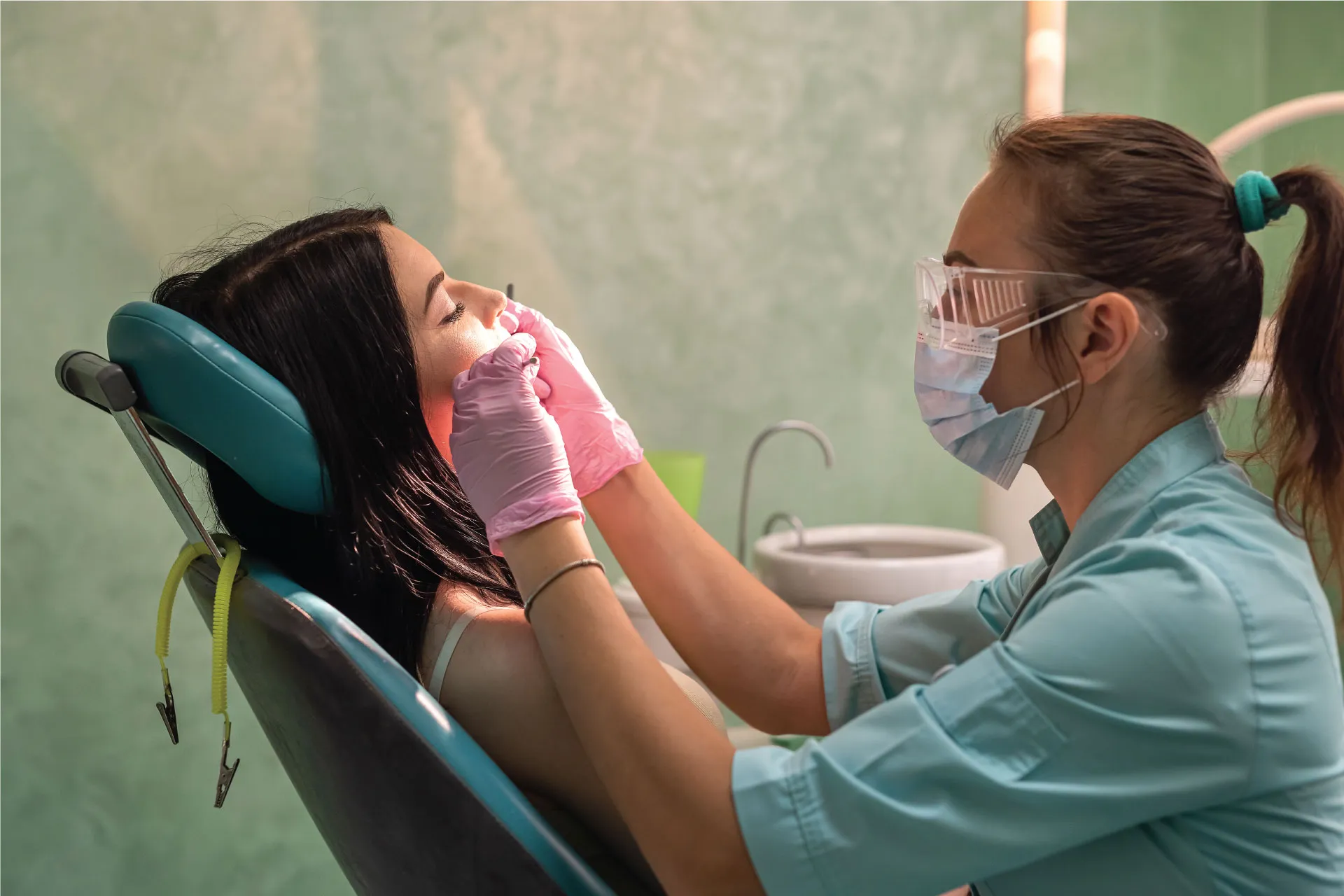Implantologist | 4 min read
Common Reasons for Stained Teeth and their Treatments
Medically reviewed by
Table of Content
Synopsis
Teeth staining occurs when the color of your teeth changes to dark shades of yellow, brown, and black. This happens due to staining food consumption, age, and other reasons.
Key Takeaways
- Stained teeth are a common occurrence and can decrease the appeal and strength of the teeth
- Different types of teeth discolouration are based on food consumption, age, and dental problems
- Simple products can remove teeth staining at home, like whitening toothpaste, mouthwash, strips, etc.
Having the perfect white smile is something everyone desires. People want their smiles to be flawless, free from sensitivity, a diastema, or staining. Stained teeth are one of the leading concerns of people across the globe regarding their smiles. There are several stained teeth causes; however, with the advanced technology at our disposal, there are equally good solutions too.
What are Stained Teeth?
Stained teeth or teeth discoloration occurs when the color of your teeth changes. The teeth lose the bright white color and become yellow, brown, or other darker colors. Either the entire tooth loses its color, or there may be the development of dark spots all over the teeth.
Teeth stains are of different types. Stains from consuming food or anything that comes in contact with the outer layer of the teeth are easily removed with a teeth stain remover. Other stains that reach the inner layers of the teeth or happen later in life due to older age are harder to get rid of and cause problems like sensitive teeth.
Additional Read: Sensitive TeethCommon Causes of Teeth Staining or Discoloration
Our teeth do not change their color overnight. They come in contact with certain substances or react to certain unhealthy activities in the form of staining. Here are some of the major reasons for stained teeth:
1. Food and Tobacco Consumption
Consuming beverages or food like coffee, tea, wine, chocolate, potatoes, red sauces, etc., causes staining by moving into the outer layers of the tooth structure. Studies show that an acidic environment in your mouth tends to stain your enamel. Another major and most common reason for staining teeth is tobacco consumption.

2. Improper Oral Hygiene
Keeping a check on your oral hygiene is essential as it leads to brown stained teeth and other critical dental issues such as cavities, periodontitis, etc. Regular brushing and flossing of teeth ensure that your teeth are in great shape.
3. Age, Medication, and Injuries
The natural color of the dentin is revealed as you get older. Additionally, previous injuries and medications affect the color of your teeth. Generally, the injured tooth darkens alone. Certain antibiotics given to children below eight years old are known to discolor their teeth.
4. Tooth Decay and Tartar
A decayed tooth leaves a dark black stain when it dies. Moreover, a build-up of bacteria around the gum line causes darkly stained teeth.
Additional Read: Periodontitis
Ways to Get Rid of Stained Teeth
Cleaning the stains off teeth can be a worrying process, especially if going to the dentist stresses you out. Nonetheless, multiple painless stain removal techniques and treatments are available on the market. Here is a list of treatments you can seek:
1. Teeth Whitening at Home
To remove the easier stains, there are at-home teeth whitening treatments. You can use whitening toothpaste and mouthwashes that contain sodium bicarbonate. They gradually wash off the stains from your teeth.
Another product you can try is a teeth whitening gel that contains peroxide-based bleaching agents. A tray comes with the gel that helps keep the gel only on the stained parts of the teeth. Other go-to whitening products include whitening strips and pens. These provide instant whitening but have a temporary effect.
2. Adopt Certain Teeth-Preserving Habits
The first habit has to be practicing proper oral hygiene regularly. Second, avoid foods and edibles that stain the teeth or try to find alternative solutions to consume without adversely affecting your teeth. Lastly, chewing gums or stronger mints give you whiter teeth and fresher breath.
3. Restorative Dentistry
For severe levels of staining and decay, restorative treatments are beneficial. You can get online consultation from your dentist and then go for treatments like white fillings, root canal extractions, bonding, veneers, and more. There are bleaching treatments as well, where the dentist shields your gums with rubber or a gel and applies the bleaching agent. This method, however, requires several visits to the clinic.
Stained teeth not only have adverse effects on the health of our teeth but also reduce our confidence when we do not have a clear smile. Addressing the teeth discoloration and going to the root of the problem at the earliest preserves your teeth and keeps them sparkling.
Additionally, visiting your dentist for regular checkups ensures that teeth problems like teeth discoloration are detected before they spread. For more information on oral hygiene and other oral concerns, you can consult online with top dentists on Bajaj Finserv Health. They will guide you on how to keep your teeth healthy and white!
References
Disclaimer
Please note that this article is solely meant for informational purposes and Bajaj Finserv Health Limited (“BFHL”) does not shoulder any responsibility of the views/advice/information expressed/given by the writer/reviewer/originator. This article should not be considered as a substitute for any medical advice, diagnosis or treatment. Always consult with your trusted physician/qualified healthcare professional to evaluate your medical condition. The above article has been reviewed by a qualified doctor and BFHL is not responsible for any damages for any information or services provided by any third party.



